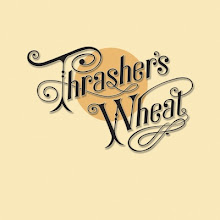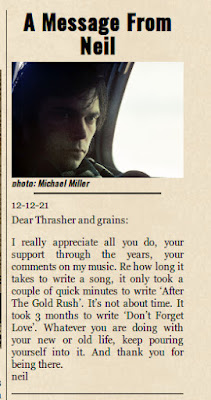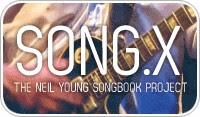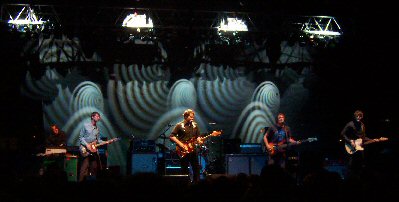Elliot Mazer: 1941 - 2021 + A Tribute by Harvey Kubernik + UPDATE

[Neil Young's famous Universal Audio 610 console used to record among other's the Elliot Mazer-produced Harvest]
UPDATE: "Spirits Fly": Neil Young's Statement on Elliot Mazer: 1941 -
2021
Producer Elliot Mazer has passed away.
Elliot Mazer's long working relationship with Neil Young and his many projects is impressive -- Grammy-award-winning Record Producer, Studio Owner, Recording Engineer, Inventor, Professor, and more. Elliot worked with Janis Joplin, Santana, Sinatra, The Who, and most famously Neil Young.
Elliot Mazer was the Producer for Neil Young's album Harvest.
He was also involved in the developmental phases of the digital technologies, including work at Stanford University’s Computer Center for Research in Music and Acoustics (CCRMA), building what is regarded as the first all-digital recording studio, and more recently working with the Warner Music Group on their Archive Project, and consulting to OraStream and Pono.
See Interview with Elliot Mazer - Neil Young's Producer & Engineer.
On recording Neil Young's album Harvest in Nashville at Quadrafonic Studios, in an interview:
Elliot Mazer: "When Neil played those songs, everything about the arrangements and sound seemed obvious.
Neil came in sang the songs and looked at the studio," recalls Elliot. "I helped him get the band. We set up the studio so that he could be right in between the members of the band. He asked if we could put him near the drums. My role was to guide the sessions, create the sounds and give him confidence that we would get great recordings of his music. I brought him in for his first playback and he was happy, and off we went. We had great sounds, great earphone mixes and we were ready to go a few minutes after he got to the studio.
The studio never got in his way.
Via Neil Young Archives:
7-18-19
Elliot Mazer is the producer of Harvest. He put the whole thing together in Nashville when I stopped there in 1971 on a tour. It was his idea.
Elliot gathered the musicians and studio, bringing some of the greatest talent in Nashville together for our Harvest recordings. He subsequently produced Time Fades Away and recorded the 1974 CSNY tour, notably On the Beach and ‘Pushed it Over the End’. Elliot co-produced the album Homegrown (unreleased as of this date).
Elliot also produced records by Linda Ronstadt, Bob Dylan, The Band, and Janis Joplin.
Thanks Elliot!
ny
Via Rusted Moon:
Elliot Mazer was one of the pioneers of mobile recording technology.He also used a studio truck to record the songs from "Harvest" that were made in Young's barn. His rolling recording studio "His Master's Wheels", which he put together especially for Neil Young's "Time Fades Away" tour and which has been used on countless tours - including by other artists - is legendary. It is still used by Neil Young's crew to process archival material, long since it was no longer roadworthy. Elliot Mazer was also one of the first producers to produce digitally. One of the earliest digital albums was Young's "Old Ways". Like Neil Young, Mazer later relied on analog technology and is working on a competing Pono system for a high-resolution digital format.
Elliot Mazer, the recording engineer and record producer who worked with Kenny Burrell, Chubby Checker, Maynard Ferguson, Richie Havens, Janis Joplin, Neil Young, Linda Ronstadt, Bob Dylan, Jack Nitzsche, Crosby, Stills, Nash & Young, and The Band died this past weekend at his San Francisco home at age 79. Cause of death was a heart attack. Mazer had battled dementia for a number of years.
During 2015 I interviewed Elliot Mazer during research for my 2015 book Neil Young: Heart of Gold, which has been translated into six foreign language editions.
“I was an A&R man for Prestige Records in 1962 and worked with Dave Pike, Clark Terry and Kenny Burrell. I loved his playing.
“I went to Nashville in 1963 to work on an album El Trio Los Panchos, a famous Mexican group, for Columbia Records. I met those guys in New York. I had told them if they came to Nashville and cut a Spanish version of the Beatles’ song ‘Girl’ it would be huge hit. Live to two-track. Mono. It came out and sold 4 million copies around the world!
“I worked with Jack Elliott, and at Cameo-Parkway, Chubby Checker, Maynard Ferguson, and Teddy Wilson. And then Richie Havens, Jack Holmes, Big Brother & The Holding Company, Gordon Lightfoot, Linda Ronstadt, Ian & Sylvia, Mike Bloomfield, and then the Area Code 615 band. Nashville session musicians. I engineered and co-produced. Wayne Moss, David Briggs, Mac Gayden, Charlie McCoy, Kenny Buttrey. [The BBC music program The Old Grey Whistle Test used their ‘Stone Fox Chase’ as the theme].
“In Nashville, David Briggs, Norbert Putnam and I then built Quadraphonic. It was a Victorian House. The control room was on the porch. We had a wood-paneled living room and the old dining room we used was more padded. We built a drum area sort of in the middle. We had a Quad-Eight recording console and Ampex MM1000 16-track. And Altec studio monitors.
“I had a friend who smoked a lot of weed, which I wasn’t then, who played nothing but After The Gold Rush as lot. That was the first time I heard of Neil Young. I was interested in the voice. All of a sudden we read about Neil coming to Nashville to tape The Johnny Cash Show. And I said we need to host a dinner. Neil, Linda Ronstadt, James Taylor and Tony Joe White attend and join us for dinner. I get introduced to Neil. ‘You work with these Nashville guys. Can I get the studio tomorrow to mess around?’ ‘Sure.’ I had to move a session. I get a hold of Kenny Buttrey [drums]. Tim Drummond [bass], Ben Keith [steel player] and this guitar player, Teddy Irwin that I worked with a lot. And I had worked with the pianist John Harris, he was a physician. I had met him when my Area Code 615 band played the Fillmore West. He was amazing.
“We get the studio ready and Neil walks in. My role is to guide Neil. He played some songs. Neil’s back was hurting him tremendously during ‘Harvest.’ And his back pain, and the fact that he sat down a lot was really inhibiting him. He had an operation a few years later that made that a lot better.
“Neil wanted to be set up near the drums and stand right in the archway between the doors in front of Kenny who was in the middle of the room. ‘OK. Sure.’ Neil wouldn’t wear ear phones then. He liked to feel the room. ‘I want to stand right in front of the drummer.’ The other musicians to the right. He runs through a song called ‘Bad Fog of Loneliness,’ which is really good Neil song. He then came into the control room to hear the playback and said, ‘this in incredible. This is the first time I’ve heard a song in playback that sounded better than what we heard in the studio.’ And that was it.
“We used a Neumann U 67 or 87 microphone on his voice and I rode his [sound] levels. I’ll tell you something with Neil, no matter what microphone you’re using he sounds fine. The microphone that he put on the harmonica holder, which was an inexpensive Sony, [ECM] they sounded good too, eventually. I also used these mikes that AKG discontinued, 224E’s, which were pencil mikes that were dynamics, dual woofer and tweeter capsule. I used them for Linda Ronstadt because she liked the microphone really close to her mouth. I used it on Neil’s guitar.
“Ben Keith from Kansas would play the most appropriate stuff ever. He would sit and listen and he also listened to songs. He would create sounds. He didn’t play steel guitar. He accompanied songs. And accompanied is an art that few people really understand. [Jim] Keltner does that. Listen to the work he did with John Lennon. Ben is on Patsy Cline’s ‘I Fall to Pieces.’ A musician who plays a song is a far better musician for recording than a musician that follows himself or follows a click or follows somebody else. Ben didn’t play parts. He played what he felt was right. Mostly what he played was right. No problem.
“Tim Drummond we used to call him the Jive Midget. He came to Nashville from Cincinnati. Tim had played with James Brown. That impressed us. Tim was a great time keeper. He was not used to playing simply. Playing with Kenny Butttey, the Nashville bass player/drummer combination was always those guys never played a bass drum and bass at the same time. They always interacted. And Drummond knew that and was trying to break into the major sessions and he knew playing nicely with Kenny was a real advantage.
“And Kenny Buttrey blew his mind! Kenny was from East Nashville and loved songs. Most musicians love their instruments. He always told me he would become a musician or a car thief. The minimalism happens because if you record Neil properly. If you give him air, his right hand controls the rhythm and the feel. Kenny followed and accompanied that. He was brilliant at that. Neil would say to Kenny, ‘Don’t use your right hand.’ There was no hi-hat. Kenny sat on his right hand.
“Teddy Irwin had come down from New York together. Good friends. Incredible guitarist. He played on a lot of sessions in New York [Jake Holmes] and Nashville. Fascinating character.
“We did a few takes of each song. Everything Neil did was done live in the studio. I didn’t use compressors or limiters on Harvest. None. Generally I use the right mike and the right place and a proper level setting is much better than trying to have a machine make it. Today that’s my philosophy. Compressors can be used for special effects. At Quadraphonic I liked the way the room sounded and there was leakage. The leakage gave the recordings character. On Neil’s records you can hear when Kenny hits the drums hard you hear the room more than you hear not.
“I knew ‘Heart of Gold’ was a hit when Neil played it. He wrote it on piano and performed it on some solo shows. His songs are generally an overpowering feeling. Kenny, Drummond, Ben, Teddy and I are in the control room. Small space. 12 feet by 20 feet. And Neil plays ‘Heart of Gold’ and I look up and Kenny and I both at the same time put our fingers up as number one. We knew it. From then it was only a matter of time to get the thing done properly and out. Neil’s singing and playing on it was magnificent. His tempo was perfect. It was great. All we had to do was make sure we didn’t mess him up.
“We did a few days during the ‘Heart of Gold’ sessions and we took a break. Neil and Jack Nitzsche went to London and did ‘A Man Needs a Maid’ and ‘There’s a World’ live with the London Symphony. And then Neil came back a little later and we did some more time. I remember the mood in the studio. Peter Asher was in the control room watching me all the time. He and I became friends based on that. And Neil finally got into a groove and played ‘Old Man’ and sang it beautifully. I knew that was the take. I would know very early with Neil if it would be a take or not. It was very obvious that the song was magnificent. I remember after that take, Neil came into the control room and saw Linda and James there and said, ‘let’s record the backing vocals.’ And we did the backing vocals right in the control room. James played six-string banjo on it.
“We did other tracks that were taped with the ‘Stray Gators,’ as the guys were now called, in California in a barn on Neil’s ranch. We used a mobile truck with a UREI tube mixer. "'Words', 'Alabama' and 'Are You Ready For The Country.’ Neil played electric guitar. Jack Nitzsche was on these sessions. Jack was a great person and an interesting person to talk and work with. I have nothing but good things to say about him.
“In Nashville we recorded to 16 track at Quad. Going to Neil’s ranch was the same to me as working in London or New York, Neil wanted a studio like Quadraphonic. He had already built a building so he got the same console that we had and similar tape machines. Words and Alabama and Are You Ready For the Country? were cut down in his barn. We used the Wally Heider remote truck for that. A tube board, called the green board that Neil actually bought eventually. I had used it with Richie Havens and I had used it with Janis [Joplin] at Winterland. That board had done a lot of wonderful things.
“For the finished album, Neil recorded ‘The Needle and the Damage Done’ from a solo tour concert at UCLA’s Royce Hall and two orchestral pieces that Glyn Johns engineered in London at Barking Town Hall that I mixed.
“In 1972 ‘Heart of Gold’ became a big hit record. I pulled up to the ranch one day. I had a rent-a-car coming from the airport, and as was about to turn the car off, I hear the deejay on KFRC, ‘Next we’re gonna hear ‘Heart of Gold.’ I run into the house, ‘Neil, come here.’ I have him sit in the car and he turns it off. I’m not sure what it was about him. I think he loved getting the big checks but publically didn’t want to acknowledge that he was a pop success.
“I love live recording. I love a bunch of people, singers, getting in a room and playing. I felt that one could make spectacular sounding recordings live. There was no reason why you couldn’t out a good microphone into a good pre-amp and probably organize things and make things sound really good. Doing a remote truck was good and I had worked on two gigs in England by then. One was Jack Nitzsche’s symphonic album, and I recorded the 1969 Isle of Wight festival. That was a Neve 16-input console owned by Bob Auger. I worked with in ’69 with Glyn johns to record bob Dylan and the Band at Isle of Wight. I had been noshing at the Carnegie Deli in New York and Bob [Dylan] came up to me and said, ‘I’m playing a show in England next week I want you to record.’ And then Albert Grossman called me a little later and asked what I wanted. Expenses and a fee. Albert was in love with the Band. He thought they were the Holy Grail.
“As far as recording Neil in the studio and recording him live or the difference between artists in the studio and live setting. I came from New York and was producing for a long time. Nobody overdubbed. Even at Cameo-Parkway, we would occasionally do a track when Chubby Checker couldn’t sing.
“Janis on stage and Janis in the studio were the same. Once she started singing she sang. A wonderful performer. I think Bob live, I’ve seen him play shows, and recorded The Last Waltz, Bob is more reserved. Neil is different but I don’t know how to describe it. Neil in the studio is magnificent when he wants to. When Neil is at a point where he really delivers a song wonderfully, it’s incredible. Live is different. He sings louder live than he does in the studio. Neil Young can play guitar and sing. You can put a microphone at the voice and a microphone at the guitar and you won’t hear anything but voice and guitar. He is a master of playing guitar at appropriate levels. I think it come from him playing a lot of clubs and wanting the guitar to be heard. That would be my guess.
“In 1974 the CSN&Y tour started at Neil’s ranch. He built a stage and I was there throughout rehearsals. Basically, Neil controlled the whole thing. Neil wants to be in charge and he’s very good at it. He told those guys that I was gonna record the tour and that was it. No question about that. They didn’t want to piss off Neil. They felt that Neil was the magic that they needed to make that thing into something really great. I had done a lot of recording before. But live recording is a very different event. It’s 1,2,3 go. As opposed to studio. ‘Give me another five minutes.’ There are potential problems with live recordings, cables going bad. All kind of things you have to be alert about. But then again, if you have Russ Kunkel playing drums. He knows how to play drums and set up his drums to record properly. Neil is easy to record. [Stephen] Stills is off the map in terms of unreliable and wacky. Crosby is OK. He sings on mike and plays guitar OK. Graham is OK. I think Neil and Stephen playing together is always better. Those guys like playing together. I was very pleased with the way I recorded those things. I was later in the recording truck for The Last Waltz.
“Janis and Neil are extraordinary people. I mean, they are unique and sound like nobody else. They were doing something that was really original and people either liked it or didn’t pay attention. I think Neil and Janis were really smart people. Above average smart people. You don’t become the success in this business without being really bright, by the way. You can’t do it all. And Janis and Neil would do it all. Janis was really interested in every aspect of making records. People keep referencing her sexuality. But in fact, she was an incredibly smart person that would really care about something and would work incredibly hard.
“Neil
works hard and is a very interesting person. I think that’s it. And
his music moves people. Because they see an artist that they like,
and they’ve liked, and see something positive that they recognize,
and they know it gives them a very good emotional response listening
to that. People want to feel good. And I think that does it.”
(Harvey Kubernik is the author of 19 books, including Canyon Of Dreams: The Magic And The Music Of Laurel Canyon and Turn Up The Radio! Rock, Pop and Roll In Los Angeles 1956-1972. Sterling/Barnes and Noble in 2018 published Harvey and Kenneth Kubernik’s The Story Of The Band: From Big Pink To The Last Waltz. For 2021 they are writing and assembling a multi-narrative book on Jimi Hendrix for the same publisher.
Otherworld Cottage Industries on July 30th published Kubernik’s 508-page book, Docs That Rock, Music That Matters, featuring Kubernik interviews with D.A. Pennebaker, Albert Maysles, Murray Lerner, Morgan Neville, Michael Lindsay-Hogg, Andrew Loog Oldham, John Ridley, Curtis Hanson, Dick Clark, Travis Pike, Allan Arkush, and David Leaf, among others.
Kubernik’s writings are in several book anthologies, most notably The Rolling Stone Book Of The Beats and Drinking With Bukowski. He was the project coordinator of the recording set The Jack Kerouac Collection.
During 2006 Harvey Kubernik spoke at the special hearings initiated by The Library of Congress that were held in Hollywood, California, discussing archiving practices and audiotape preservation.
In 2020 Harvey served as Consultant on Laurel Canyon: A Place In Time documentary directed by Alison Ellwood which debuted om May 2020 on the EPIX/MGM television channel.
Kubernik penned a back cover book jacket endorsement for author Michael Posner’s book on Leonard Cohen that Simon & Schuster, Canada published in October 2020, Leonard Cohen, Untold Stories: The Early Years).
Kubernik’s 1995 interview, Berry Gordy: A Conversation With Mr. Motown appears in The Pop, Rock & Soul Reader edited by David Brackett published in 2019 by Oxford University Press. Brackett is a Professor of Musicology in the Schulich School of Music at McGill University in Canada. Harvey joined a distinguished lineup which includes LeRoi Jones, Johnny Otis, Ellen Willis, Nat Hentoff, Jerry Wexler, Jim Delehant, Ralph J. Gleason, Greil Marcus, and Cameron Crowe.
Kubernik’s
1996 interview with poet/author Allen Ginsberg was published in
Conversations
With Allen Ginsberg,
edited by David Stephen Calonne for the University Press of
Mississippi in their 2019 Literary Conversations Series).
Labels: elliot mazer, neil young

































 Human Highway
Human Highway

















 Concert Review of the Moment
Concert Review of the Moment





 This Land is My Land
This Land is My Land

 FREEDOM In A New Year
FREEDOM In A New Year









 *Thanks Neil!*
*Thanks Neil!*




![[EFC Blue Ribbon - Free Speech Online]](http://www.thrasherswheat.org/gifs/free-speech.gif)











 The Unbearable Lightness of Being Neil Young
The Unbearable Lightness of Being Neil Young Pardon My Heart
Pardon My Heart



 "We're The Ones
"We're The Ones  Thanks for Supporting Thrasher's Wheat!
Thanks for Supporting Thrasher's Wheat!




 This blog
This blog 
 (... he didn't kill himself either...)
#AaronDidntKillHimself
(... he didn't kill himself either...)
#AaronDidntKillHimself









































































 Neil Young's Moon Songs
Neil Young's Moon Songs




 Civic Duty Is Not Terrorism
Civic Duty Is Not Terrorism Orwell (and Grandpa) Was Right
Orwell (and Grandpa) Was Right


 What's So Funny About
What's So Funny About 



13 Comments:
Elliot Mazer, RIP. Thanks for the music! We’ll see you at the Great Gig in the Sky.
-Alan in Seattle
A beautiful ear and a wonderful producer for so many artists and for such a long time. A incredibly gifted person indeed. Rest easy now Elliot, we’ll all see you again when its our time. Prayers for his family and friends around the world.
Peace 🙏
Thank u Winnie Jorge.
RIP DEP. Wenry.
RIP Elliot. I really enjoyed our time working together - thanks for inviting me into your club. I learned a lot from you. Thanks for all the wonderful music you left us.
Safe sailing.
Mike Herbick
So sorry to hear of Elliot's passing. As Dan said, a beautiful ear. Many of Neil's greatest recordings wouldn't have sounded the same without that balanced, sensitive production that found a unique, yet comfortably familiar, soundscape for each track. We'll be forever grateful for Elliot's contributions to the music of Neil Young and others.
RIP, best music era ever! Thank-you Thank-you Thank-you Elliot!
That's Alright We Can Do Whatever You Please
https://www.youtube.com/watch?v=IUaBe_lRfCI
"Everything we do is music."
--John Cage
Thank you for all the wonderful sounds
Leaving us listening
@Mr. Henry, Nice to see the John Cage shout-out, incidentally. It pleases me to think many of us Neil fans are eclectic and open-minded. Just because you dig the groove of the "third best garage band in the world", that doesn't mean you can't appreciate a whole other panoply of sounds!
RIP Elliott Mazer... thanks for helping bring the world such excellent music.
This comment has been removed by the author.
@Ian, Thanks so much, it's all one song!
@SH, Totally agree, Elliot Mazer was was a true Sherpa in the mountains of sound and music. When I listen to Live At Raji's (one of my favorite albums) I imagine him somehow capturing this show and music and being there and allowing me to experience it. The whole feeling when Steve says "hopefully Elliot is ready up there" and them BAM:
https://www.youtube.com/watch?v=58zEfL60L2o
RIP Chick Corea
You made your Dad so proud and opened up my young ears to a new World waiting
Thanks all for paying respects to another passing legend.
fyi, Neil has issued a statement on Elliot M.
"Spirits Fly": Neil Young's Statement on Elliot Mazer: 1941 - 2021
http://neilyoungnews.thrasherswheat.org/2021/02/spirits-fly-neil-youngs-statement-on.html
I enjoy becoming educated about the people behind the scenes. I have the name etched in my mind from album covers but did not truly appreciate what he did. And even if Neil Young is sometimes a difficult person to deal with, he is clearly generous in virtually all respects.
Post a Comment
<< Home